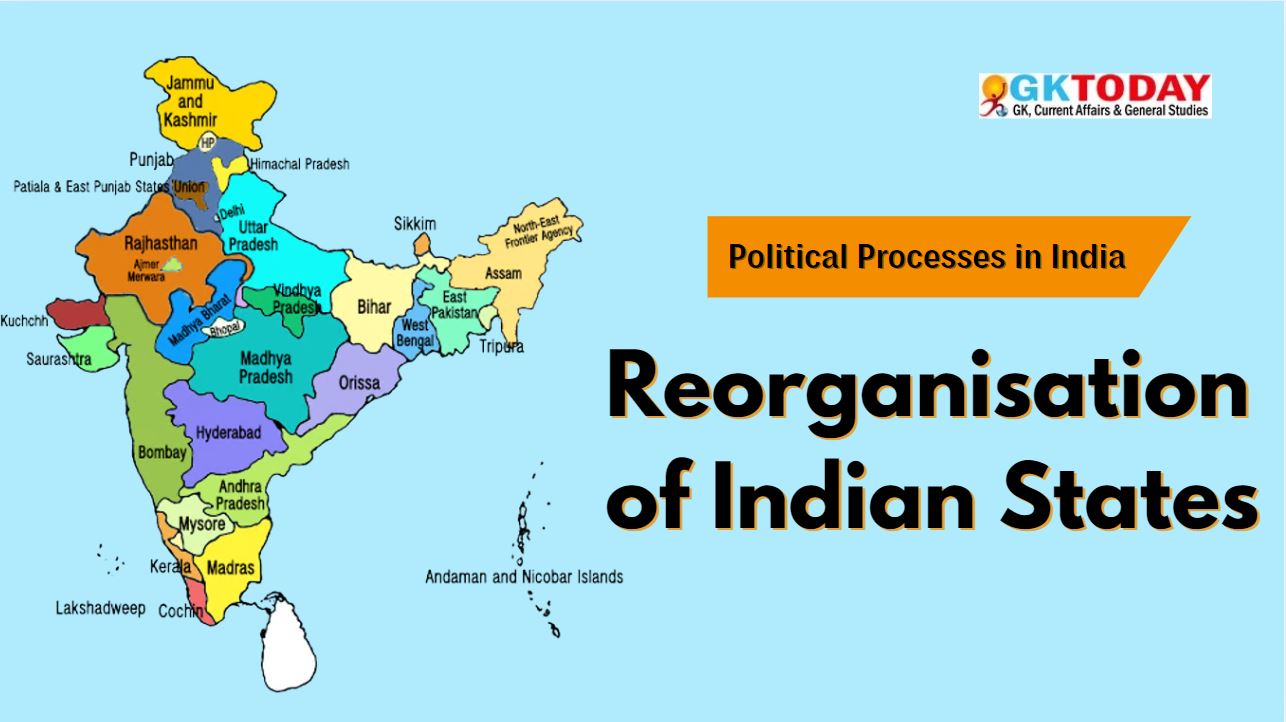Reorganisation of Indian States – A Political Perspective [UGC-NTA NET Political Science Notes]
The reorganisation of state of India is aspect of the country’s political evolution. It reflects the need to address linguistic, cultural, and administrative disparities that emerged after independence. This process has shaped regional identities and governance structures, influencing the political landscape of India.
Historical Background
India’s political structure has undergone substantial changes since independence.
Pre-Independence Era
– India was divided into British provinces and numerous princely states. – The British Raj created administrative divisions that did not consider linguistic or cultural identities.
Post-Independence
– The need for reorganisation arose to unify diverse groups. – The aim was to create states that reflected linguistic and cultural identities.
Formation of the State Reorganisation Commission (SRC)
The State Reorganisation Commission was very important in reshaping India’s states.
Establishment
– Formed in 1953, chaired by Fazal Ali. – Its primary objective was to recommend reorganisation based on linguistic lines.
Recommendations
– The SRC’s suggestions led to the formation of new states. – It aimed to enhance administrative efficiency and representation.
Key Reorganisation Acts
Several acts have facilitated the reorganisation of states in India.
States Reorganisation Act, 1956
– Implemented SRC recommendations. – Resulted in 14 new states and 6 Union Territories.
Further Reorganisation
– 1960 – Gujarat and Maharashtra were formed from the bilingual state of Bombay. – 1966 – Haryana was carved out of Punjab. – 1972 – Meghalaya, Manipur, and Tripura emerged from Assam.
Linguistic Basis of Reorganisation
The linguistic basis was fundamental in the reorganisation process.
Linguistic States
– States were reorganised primarily according to the languages spoken. – Examples of states formed on this basis include: Andhra Pradesh (Telugu) Tamil Nadu (Tamil) Karnataka (Kannada) Kerala (Malayalam)
Impact of Reorganisation
The reorganisation of states has had far-reaching effects.
Political Stability
– Enhanced representation for various linguistic groups. – Improved governance at the regional level.
Cultural Identity
– Strengthened regional identities and languages. – Fostered a sense of belonging among diverse communities.
Administrative Efficiency
– Improved local governance structures. – Streamlined administrative functions.
Recent Developments
The process of reorganisation continues to evolve.
Formation of New States
– 2000 – Creation of Jharkhand, Chhattisgarh, and Uttarakhand. – 2014 – Telangana was formed from Andhra Pradesh.
Ongoing Demands
– Regions like Gorkhaland and Vidarbha are advocating for statehood. – The demand for reorganisation remains a dynamic aspect of Indian politics.
Challenges and Issues
The reorganisation process faces several challenges.
Inter-State Disputes
– Ongoing disputes over borders and resource allocation. – Historical grievances often fuel tensions.
Ethnic and Regional Tensions
– Potential for conflict due to demands for separate states. – Ethnic identities sometimes clash with national unity.
Central vs. State Authority
– Balancing power dynamics is essential. – The central government often grapples with regional aspirations.
Constitutional Provisions
The Constitution of India provides a framework for state reorganisation.
Article 1
– Declares India as a Union of States.
Article 2
– Grants power to admit new states.
Article 3
– Empowers Parliament to form new states and alter boundaries.
Role of Political Parties
Political parties play important role in state reorganisation.
Regional Parties
– Emergence of regional parties advocating for statehood. – They address local issues and aspirations.
National Parties
– National parties strategise to accommodate regional demands. – They aim to maintain national unity while addressing local concerns.


